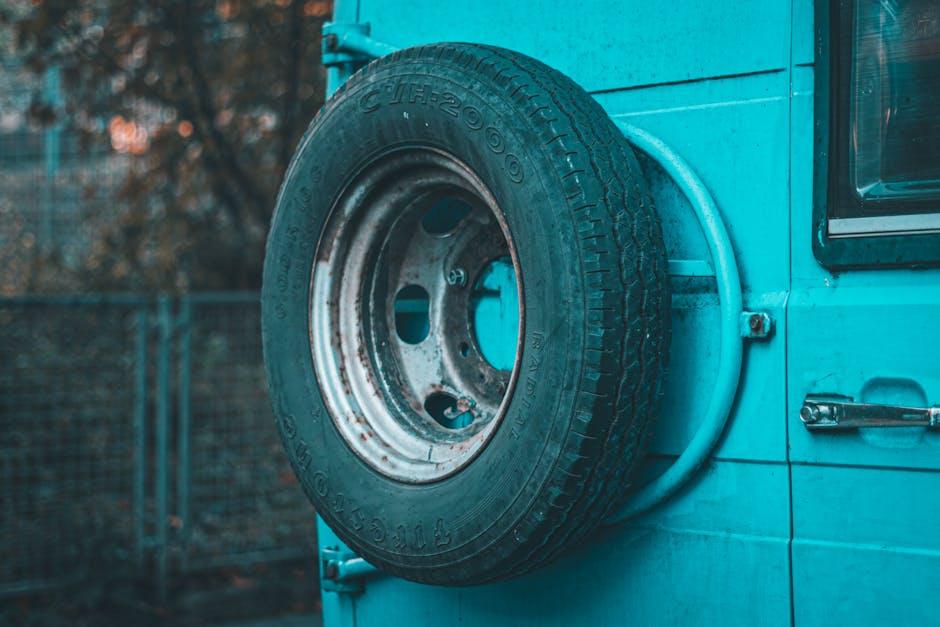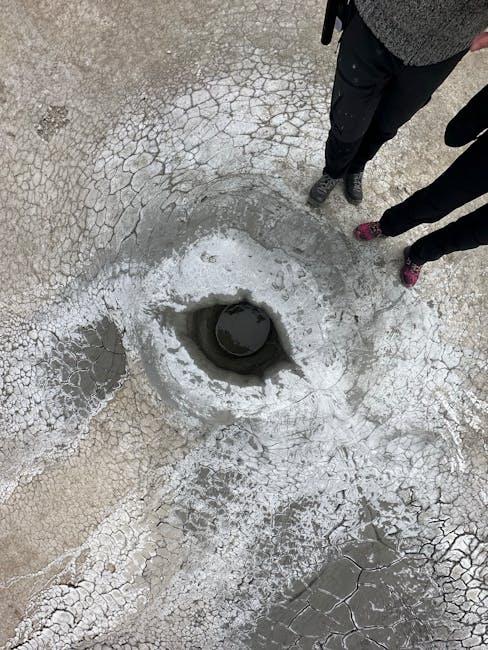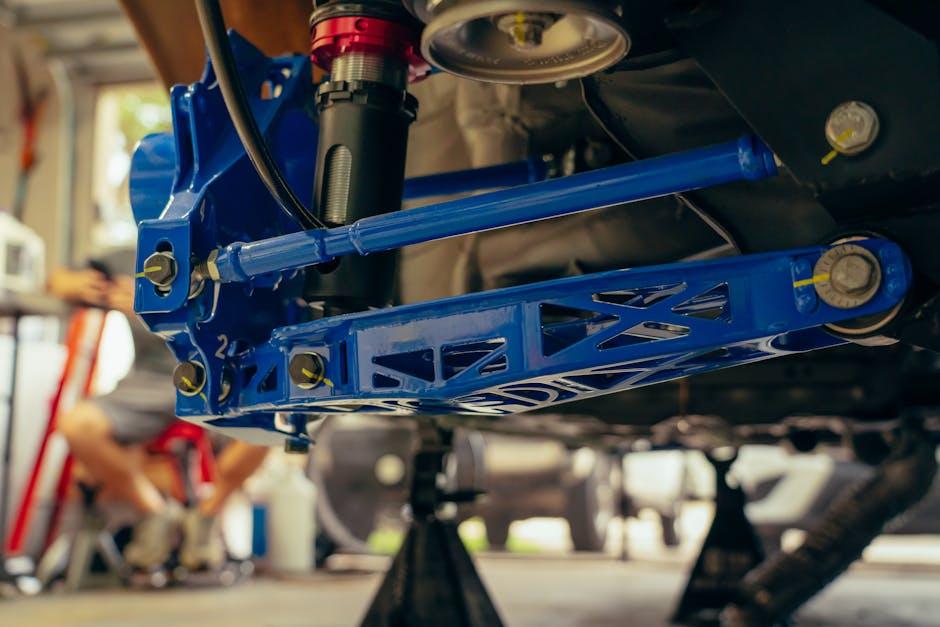Beneath the smooth glide of every vehicle lies a complex network of components working in harmony to ensure a safe and comfortable ride. Among these unsung heroes are ball joints and bushings—small yet crucial parts often overlooked until their performance falters. As the silent guardians of your suspension system, their wear and tear can subtly signal a shift from seamless control to potential trouble on the road. Recognizing the early signs of worn ball joints or bushings not only safeguards your vehicle’s handling but also prevents costly repairs down the line. In this article, we’ll explore the telltale symptoms that reveal when these essential components are crying out for attention.
Table of Contents
- Common Symptoms Revealing Ball Joint and Bushing Wear
- How Worn Ball Joints Impact Vehicle Handling and Safety
- Identifying Noise Patterns Linked to Failing Bushings
- Visual Inspection Techniques for Detecting Ball Joint Deterioration
- Recommended Maintenance Practices to Extend Component Life
- When to Replace Ball Joints and Bushings for Optimal Performance
- Q&A
- Key Takeaways

Common Symptoms Revealing Ball Joint and Bushing Wear
When ball joints or bushings start to degrade, your vehicle often sends subtle yet unmistakable signals. Drivers may notice unusual noises such as clunking or squeaking coming from suspension areas, especially when navigating bumps or making turns. Another common indication is a persistent vibration in the steering wheel, often worsening with speed changes. These symptoms typically arise because worn components allow excessive play and movement, disrupting the smooth alignment of the wheels.
Other telltale signs include uneven tire wear and poor handling responsiveness. You might feel the car pulling to one side, or experience a loose or unstable steering sensation, making it difficult to maintain a straight path. Below is a quick reference guide that relates specific symptoms to the worn parts causing them, helping you identify the root issue more effectively:
| Symptom | Likely Component | Effect on Drive |
|---|---|---|
| Clunking sounds | Ball Joints | Loose steering and suspension noise |
| Squeaking noises | Bushings | Increased friction causing wear |
| Tire wear – uneven | Both | Poor alignment and traction |
| Steering vibration | Ball Joints | Unstable control at speed |

How Worn Ball Joints Impact Vehicle Handling and Safety
When ball joints are compromised, the dynamics of your vehicle’s steering and suspension system begin to deteriorate quickly. You may notice a loose or wandering steering feel, which directly reduces precision and control on the road. Sudden jolts or uneven tire wear patterns can also be traced back to these weakened connections. The relationship between the control arms and wheels becomes less rigid, impairing stability and increasing the risk during high-speed maneuvers or emergency stops.
Key safety concerns include:
- Increased vibration: Excessive movement in the joints causes vibration to travel through the steering wheel.
- Premature tire wear: Misalignment influenced by ball joint wear leads to uneven tire degradation.
- Potential loss of control: If ignored, worn ball joints can separate, causing sudden wheel collapse.
- Degraded braking performance: Instability affects how the vehicle responds during braking.
| Symptom | Impact on Handling | Safety Risk |
|---|---|---|
| Steering Wander | Loss of directional control | High |
| Clunking Sounds | Delayed suspension response | Moderate |
| Vibration | Unstable steering feedback | Moderate to High |
| Uneven Tire Wear | Reduced traction | Moderate |

Identifying Noise Patterns Linked to Failing Bushings
When bushings start to wear out, they often create subtle but telltale sounds that can alert you before the damage escalates. These noises typically manifest as a clunking or creaking sound when driving over bumps or during sharp turns. Early-stage wear might produce faint squeaks, but as deterioration progresses, expect louder and more frequent clanks that vibrate through the steering wheel or suspension. Paying close attention to how and when these sounds occur can help pinpoint the issue earlier, preventing costly repairs down the line.
Here are some common audio clues linked to failing bushings:
- Deep thuds coming from the suspension during acceleration or braking
- Rhythmic knocking in sync with wheel rotation
- Squealing or chirping that worsens in cold weather or right after starting your vehicle
| Noise Type | Likely Cause | Driving Condition |
|---|---|---|
| Creaking | Dry or cracked bushings | Turning corners, low speeds |
| Clunking | Worn or loose bushings | Hitting bumps, acceleration |
| Squeaking | Insufficient lubrication | Cold start, tight maneuvers |

Visual Inspection Techniques for Detecting Ball Joint Deterioration
When inspecting ball joints for wear, keen visual observation is crucial. Start by examining the rubber boots that encase the joints; any cracks, tears, or signs of grease leakage are telltale indicators that contamination or moisture has entered the assembly. Such breaches can accelerate corrosion and wear, reducing the joint’s lifecycle significantly. Look for uneven wear patterns or rust buildup, as these often suggest that more extensive damage may be occurring internally. Additionally, note any visible deformation or looseness by gently manipulating the joint — excessive movement is a clear sign that replacement might be necessary.
Other indirect visual clues come from nearby components, such as bushings, which often exhibit signs of deterioration before the ball joints fail entirely. These signs include:
- Cracked or split rubber: Indicating hardened or fatigued material.
- Displacement: Misaligned or shifted bushings hinting at underlying wear.
- Unusual wear marks: On adjacent metals, suggesting metal-on-metal contact due to lost cushioning.
Monitoring these factors regularly can prevent unexpected suspension failures and maintain optimal handling characteristics.

Recommended Maintenance Practices to Extend Component Life
Proper upkeep is essential when it comes to ensuring the longevity of suspension components like ball joints and bushings. Regular inspections can catch early signs of deterioration, preventing costly repairs down the line. Pay special attention to frequent lubrication intervals and avoid exposure to harsh elements, which can accelerate wear and cause premature failure. Consider implementing a routine check every 6,000 to 10,000 miles or during seasonal tire rotations to detect any abnormal play or creaking noises.
By following these maintenance tips, you not only preserve the function of your vehicle’s steering and handling but also enhance safety on the road. Incorporate the following into your care regimen:
- Regular grease application: Utilize high-quality lubricant designed for suspension components.
- Check alignment and suspension geometry: Misalignments put extra stress on wear points.
- Replace worn boots and seals: Prevent contaminants from entering critical joints.
- Monitor tire wear patterns: Uneven wear often signals suspension troubles.
| Maintenance Action | Recommended Interval |
|---|---|
| Lubricate Ball Joints | Every 6,000 miles |
| Inspect Bushings & Boots | Every 12,000 miles |
| Alignment Check | Annually or after impacts |
| Suspension Component Replacement | As needed per inspection |

When to Replace Ball Joints and Bushings for Optimal Performance
Timely replacement of ball joints and bushings is crucial to maintain your vehicle’s safety and handling. You should consider inspection or replacement when you experience persistent clunking noises during turns, uneven tire wear, or excessive vibration through the steering wheel. Additionally, if your car exhibits a wandering steering feel or becomes unstable during cornering, these are clear indicators that the suspension components are past their prime and need attention.
Ignoring worn ball joints and bushings can lead to premature damage to other suspension parts. Below is a handy reference to help you decide when to replace these components based on common symptoms and mileage:
| Symptom | Ball Joints | Bushings |
|---|---|---|
| Noise on bumps or turns | Immediately check | Inspect within 5,000 miles |
| Steering vibration | Suspect wear at 50,000 miles | Replace at 60,000 miles |
| Uneven tire wear | Replace during annual check | Monitor regularly |
| Loose steering feel | Urgent replacement | Evaluate at 40,000 miles |
Q&A
Q: What exactly are ball joints and bushings in a vehicle?
A: Ball joints are spherical bearings that connect the control arms to the steering knuckles, allowing for smooth wheel movement and steering. Bushings are rubber or polyurethane cushions that absorb shocks and reduce friction between metal parts, providing a smoother ride and better handling.
Q: Why is it important to recognize signs of worn ball joints or bushings early?
A: Detecting wear early can prevent safety hazards like poor steering control or uneven tire wear, save on costly repairs, and maintain overall vehicle performance and ride comfort.
Q: What are some common signs that indicate worn ball joints?
A: Look out for symptoms such as clunking or knocking noises when driving over bumps, uneven tire wear, wandering steering, vibration in the front end, or looseness in the steering wheel.
Q: How can worn bushings affect driving experience?
A: Worn bushings often cause excessive vibration, rattling noises, poor handling, and increased tire wear, making the ride feel rougher and less stable, especially around corners.
Q: Can worn ball joints or bushings cause safety issues?
A: Absolutely. If ball joints fail, they can cause loss of steering control or even a wheel collapse, while deteriorated bushings can compromise suspension stability, increasing the risk of accidents.
Q: Are there simple tests or checks to identify worn ball joints or bushings?
A: A mechanic can perform a visual inspection, check for excessive play by lifting the vehicle and moving components by hand, and listen for noises when driving. Drivers might also notice steering responsiveness changes or unusual vibrations.
Q: How often should ball joints and bushings be inspected or replaced?
A: Inspection intervals vary, but generally, these parts should be checked during routine maintenance or every 30,000 to 50,000 miles. Replacement depends on driving conditions, but prompt action at signs of wear is crucial.
Q: Is it possible to drive with worn ball joints or bushings, and what are the risks?
A: While it’s technically possible, driving with worn components is risky. It can lead to unpredictable handling, increased tire wear, and in worst cases, catastrophic suspension failure.
Q: What can be done to prolong the life of ball joints and bushings?
A: Regular maintenance, avoiding rough terrain when possible, timely alignment checks, and using quality replacement parts help extend their lifespan.
Q: When should I consult a professional mechanic about ball joint or bushing issues?
A: At the first sign of unusual noises, vibrations, steering problems, or uneven tire wear, it’s wise to seek a professional diagnosis to ensure vehicle safety and performance.
Key Takeaways
In the subtle symphony of your vehicle’s performance, worn ball joints and bushings often play the quiet yet crucial notes that signal deeper issues. Recognizing these signs early not only safeguards your ride’s comfort and safety but also extends its lifespan. By tuning in to the creaks, vibrations, and uneven tire wear, you become the attentive conductor your car needs—ensuring every journey is smooth and secure. After all, understanding the whispers beneath the wheels is the first step toward a safer road ahead.
